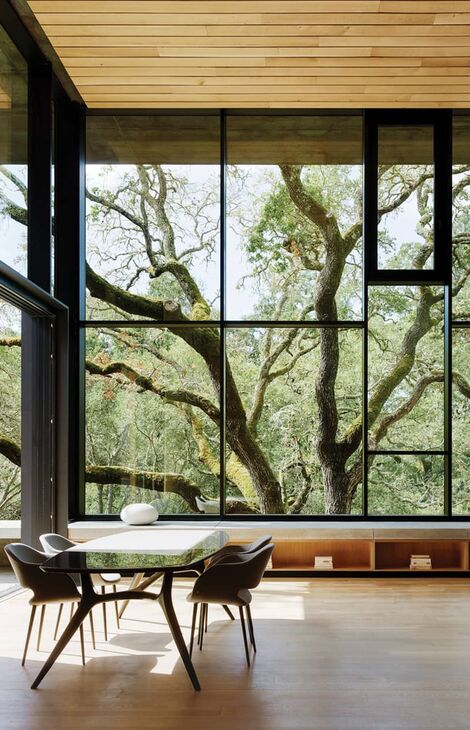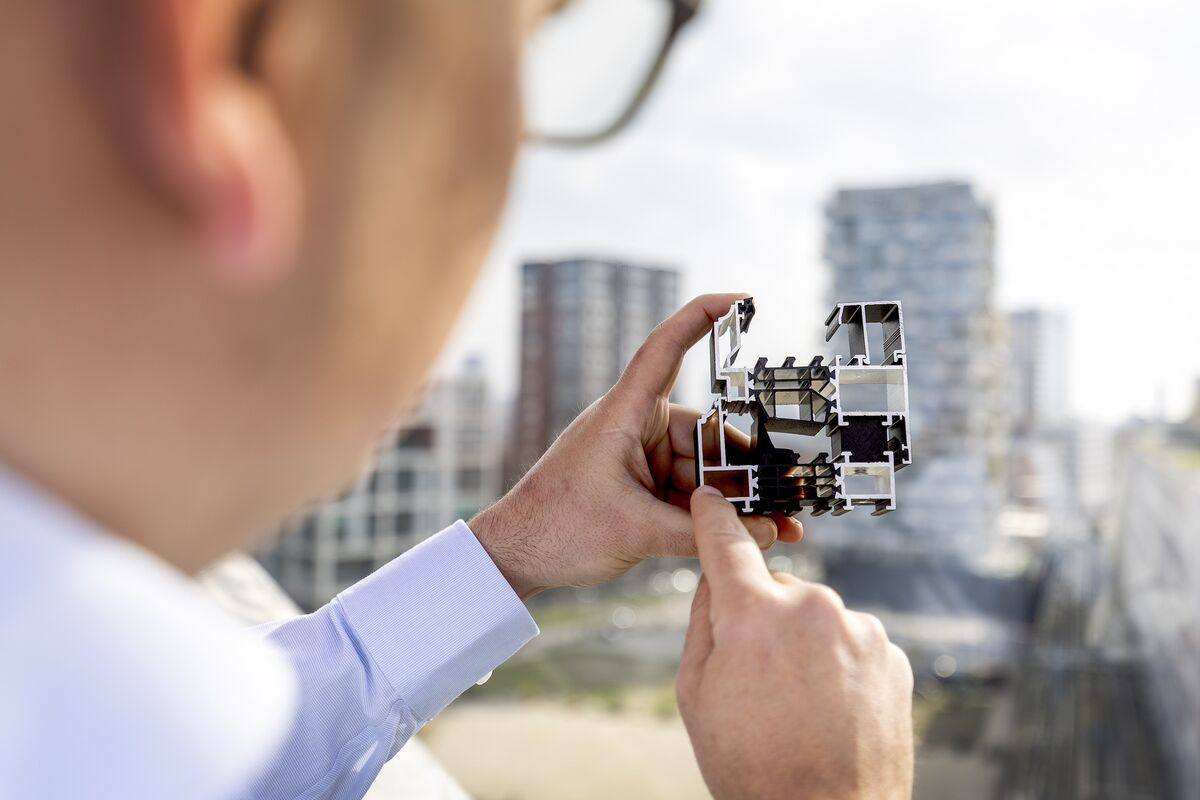Aluminium en de gevolgen ervan voor het milieu
Het beperken van de milieu-impact van uw belangrijkste materialen is een kernverantwoordelijkheid van elk bedrijf. Daarom focust Reynaers Aluminium op duurzaamheid, zowel tijdens het productieproces als tijdens de levenscyclus van onze aluminium oplossingen.
Het verminderen van onze milieu-impact begint op materiaalniveau. Om zuiver aluminium te verkrijgen, wordt aluminiumoxide gesmolten tijdens een elektrolytisch proces - het Hall-Héroult-proces. Door het gebruik van groene energie uit waterkrachtcentrales beperken wij onze koolstofvoetafdruk tot vier kilogram koolstofdioxide per kilogram aluminium. Dat is ongeveer de helft van het Europese gemiddelde! Het resultaat is wat wij noemen koolstofarm primair aluminium.
Naast een energie-efficiënt productieproces staan aluminiumproducten bekend om hun lange levensduur en onbeperkte recycleerbaarheid. In feite kan aluminium oneindig vaak worden hergebruikt zonder kwaliteitsverlies. Dat maakt de behoefte aan elektriciteit tijdens het eerste productieproces tot een eenmalige investering.
What is the EU Green Deal?
The EU Green Deal is the European Union’s strategy to make Europe climate-neutral by 2050. The framework aims to reduce greenhouse gas emissions, boost clean energy, and promote circular economy principles across industries, including the construction sector.
To reduce the environmental footprint of the building industry, there are two revolutionary waves ongoing. Next to an increased focus on renovation, circularity is the main priority. The aim of the game is to reduce material usage, waste and embodied carbon, which accounts for 30% of a building’s emissions.
As prescribed by the EU Green Deal, at least 50% of components used in the construction sector should be low carbon (recycled or manufactured with clean energy) by 2030. Next, the embodied carbon of these building components should be cut by 50% by 2030, compared to 1990 figures.
The aluminium used in windows, doors and façade accounts for only 3% of the total carbon footprint of a building. When looking at the bigger picture: it is important, but no so important... Yet to achieve these stringent targets that have been set, Reynaers Aluminium is motivated to do its share of the work.
Duurzame en energie-efficiënte oplossingen
Aluminium wordt niet aangetast door UV-stralen of vocht en corrodeert of rot niet. Daarom hebben de aluminium schuifsystemen, vliesgevels, ramen en deuren van Reynaers een gemiddelde levensduur van meer dan 40 jaar. Tijdens deze lange levensduur verbeteren onze duurzame oplossingen de werk- en levenskwaliteit van alle bewoners in uw woning. Zo bieden onze aluminium profielen een hoge mate van luchtdichtheid en thermische isolatie. Zo wordt het warmteverlies beperkt en worden nieuwe en bestaande gebouwen aanzienlijk energie-efficiënter.
Bovendien kunnen aluminium kozijnen dankzij hun hoge stabiliteit zelfs de grootste en zwaarste glasplaten dragen. U geniet van een overvloed aan warmte en natuurlijk daglicht, terwijl uw verwarmings- en elektriciteitsrekening aanzienlijk daalt. Vermijd nog meer kosten - en verlaag uw impact op het milieu - want onze aluminium oplossingen zijn onderhoudsarm en gemakkelijk te reinigen.
Uw aluminium ramen en deuren zijn zeker een duurzame en verantwoorde keuze. Dankzij hun lange levensduur, uitstekende thermische isolatie en eenvoudig onderhoud bespaart u zowel tijd als geld. En bij Reynaers Aluminium blijven we investeren in energie-efficiënte, recyclebare en duurzame oplossingen om uw en onze toekomst elke dag een beetje groener te maken.
Meer over de levenscyclus van aluminium?


Our approach to low-carbon sourcing
Today, already 77% of our aluminium portfolio is low-carbon, which is in line with the EU Green Deal. At Reynaers Aluminium, the average carbon footprint of our aluminium profiles in 2024 is 4.13 kg CO2e/kg aluminium (billet + extrusion), a -20% difference to our base year 2019. We plan to further reduce it to 2.81 by 2030 (-46% vs. 2019), which is also in line with the EU Green Deal.
How will we achieve this? Over the past years, as part of a comprehensive purchasing strategy, we have engaged with the right suppliers to decarbonize our aluminium sourcing by 2030. And we have already made significant progress. With a strong commitment and a thorough decade-long industrial plan, we are confident the upcoming years will further confirm the trend. All to make your future and ours a little bit brighter, one step at a time.
Want to learn more about the carbon impact of our products? Click the button below.



